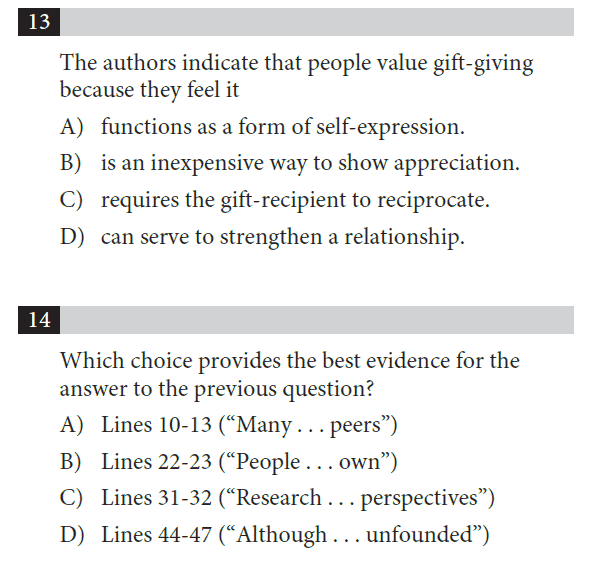
SAT Reading: 3 Tips to Boost Your Score
SAT Reading: The Toughest Section
The SAT is made up of 3 sections: Evidence Based Reading, Writing, and Math.
The Reading section is often lamented by students as the hardest section of the SAT. In truth, it may be the hardest section to get a perfect score on.
In our new SAT Reading series, we’ll cover the top 3 reasons why this SAT section is difficult. But more importantly, we’ll show you proven strategies for overcoming each of those problems and earning a top — even perfect — SAT Reading score!
What Makes The SAT Reading Section So Hard?
Questions on the SAT Reading are often difficult to interpret and followed by misleading answer choices. Many of them are worded in a confusing manner and require higher-level critical thinking skills than what a student is used to seeing on a timed test in school.
Oftentimes, more than one answer choice may seem correct. This is ON PURPOSE! The SAT is trying to confuse you with misleading answers, which can lead you to select the wrong answer or spend a lot of time trying to decide between two choices.
But there are proven ways to boost your accuracy.
Below are our 3 tips to get you started.
Tip 1: Learn the different types of questions the SAT will ask.
College Board breaks its SAT Reading question types into 3 main categories:
- Information and Ideas
- Rhetoric
- Synthesis
Information and Idea questions
Information and Idea questions are basically reading comprehension questions that test your understanding of what you read, whether it’s the central claim of the passage or the meaning of a word in context. This is the most common question type on SAT Reading.
Rhetoric Questions
Rhetoric questions are higher-level questions. They test you on how and why the author wrote the passage. They tend to be “big picture” questions because most of them require you to understand the author’s point of view/purpose and how the author’s organization or word choice contributes to the overall message of the text. This is the 2nd most common question type on SAT Reading.
Synthesis Questions
Synthesis questions only apply to the Dual Passage and passages that have charts, figures, and graphs. Such questions test your ability to take two separate pieces of information (such as from two passages discussing the same topic, or a passage and a corresponding graph) and draw connections between the two. This is the least common question type on SAT Reading.

Knowledge is power. And just like how knowing the different SAT passage types is useful, being able to distinguish between the different types of questions will also help improve your score.
Once you’re able to easily recognize these question types, focus on the questions you are struggling with and spend most of your time practicing those.
Tip 2: Focus on mastering Reading Closely and Evidence questions first.
Beyond the 3 main topics given by the College Board, MEK Review has broken these categories into even more specific and helpful groups:
Info and Ideas
- Reading Closely
- Evidence
- Word in Context
- Central Idea or Summary
- Relationship
Rhetoric
- Purpose
- Word Choice
- Point of View
- Text Structure
- Argument
Synthesis
- Dual Passage
- Quantitative
To master the SAT Reading section, you have to be able to master ALL the question types!
However, you can begin by focusing on the two most frequently asked question types.
That would be Reading Closely and Evidence question types.
They look like this, respectively:

These two question types usually make-up 40-50% of the questions in the Reading section.
Simply raising your accuracy in these two question types is one of the easiest ways to boost your score.
Here are 2 quick tips to get you started:
- Reading Closely questions are accurately named! To get the right answer, you must read closely. That means you must go back to the passage and find direct evidence, not rely on your memory.
- These two types of questions almost always come in pairs. When an Evidence question follows a Reading Closely question like in the above example, review the Evidence answer choices first. One of those lines of evidence directly proves the correct Reading Closely answer choice, so reviewing these evidence lines first will lead you to the correct answer.
Tip 3: Learn to spot trap answer choices.
It’s very important to remember that each question has 3 wrong answer choices and 1 correct answer choice.
Often students will pick an answer choice that seems the most right.
However, to score high on the SAT Reading, you can’t think this way. There is no most right answer. One answer is 100% correct, the other are unambiguously incorrect.
After you take a practice SAT, reflect on why an answer is right and why the other answers are wrong. How does the right answer fully answer the question, and how do the wrong answers come up short?
Once you start to review your test this way, you will begin to notice common misleading answer choices.
For instance, the SAT loves to put answer choices that are partially correct: most of the answer choice lines up with what the passage said, but some detail of the answer is wrong.
But if the answer choice is partially correct, it is really completely incorrect! So you can eliminate it as an answer choice.
The more you reflect on not just the right answers, but also the wrong answers, the more quickly you will recognize these traps on the official exam.
Final Tips
Use this blog to start boosting your SAT Reading score! Even better, let MEK Review help!
Let MEK Review teach you proven strategies by joining our SAT Prep courses. Boost your score by 170+ points!
Call 855-346-1410 or contact us here today.
We look forward to helping you!



